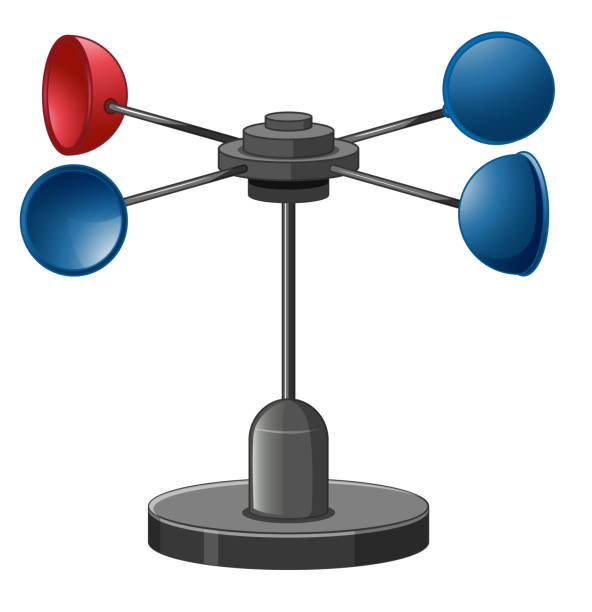Discovering the Functions and Benefits of Anemometers for Weather Enthusiasts and Professionals
From mug anemometers to sonic anemometers, each kind brings its distinct set of applications and benefits, shedding light on numerous facets of atmospheric conditions. As we dig into the functions and advantages of anemometers, a much deeper understanding emerges not only of dominating climate sensations but additionally of the more comprehensive effects for markets like wind energy manufacturing and ecological study.
Significance of Anemometers in Weather Monitoring
Anemometers play a critical role in climate tracking by providing precise measurements of wind rate, aiding in projecting and understanding weather patterns. These tools, varying from traditional mug anemometers to modern ultrasonic anemometers, are essential for meteorologists, scientists, and weather lovers alike. By gauging wind speed, anemometers aid in figuring out the strength of weather condition sensations such as storms, tornadoes, and storms. Additionally, they give valuable information for aviation, maritime operations, and different markets that are delicate to wind problems.

Kinds Of Anemometers and Their Applications
The most typical types of anemometers include mug anemometers, vane anemometers, hot-wire anemometers, and ultrasonic anemometers. Cup anemometers are composed of three or 4 cups placed on straight arms that revolve with the wind, measuring its rate. Vane anemometers, on the other hand, make use of an easily rotating vane to line up with the wind direction, providing both wind speed and instructions measurements.
Each kind of anemometer has its special benefits and applications. Mug anemometers are suitable and durable for general climate tracking, while vane anemometers are preferred for directional measurements. Hot-wire anemometers are sensitive to low air speeds, making them perfect for interior environments. Ultrasonic anemometers are non-intrusive and provide high accuracy, usually used in study and specialized weather tracking applications. Understanding the characteristics and applications of each sort of anemometer is essential for choosing one of the most appropriate instrument for details weather keeping an eye on needs.
Advantages of Making Use Of Anemometers in Projecting
In meteorology, the utilization of anemometers provides vital benefits for improving the accuracy of weather forecasting. Anemometers gauge wind rate and direction, supplying vital information for anticipating weather patterns. By incorporating wind information right into forecasting designs, meteorologists can much better comprehend the movement of weather systems, prepare for adjustments in atmospheric conditions, and issue more specific projections.
Additionally, anemometers play an important role in examining prospective weather threats. Monitoring wind rates helps forecasters predict extreme weather condition occasions such as typhoons, tornadoes, and winter months tornados with greater precision. This early caution system enables authorities to release prompt alerts and implement essential precaution, lowering the threats to life and residential property.
Furthermore, anemometers assist in optimizing eco-friendly energy manufacturing. find By evaluating wind patterns, meteorologists can determine suitable areas for wind farms and forecast energy outcome, adding to the effective generation of wind power.

Anemometers in Wind Energy Production
Provided the critical function anemometers play in supplying precise wind information for climate forecasting and risk evaluation, their value extends to the realm of wind power manufacturing. Anemometers are essential tools in the area of wind power, where the measurement of wind rate and direction is essential for establishing the feasibility and efficiency of wind turbine installments. By accurately measuring wind speeds at varying heights, anemometers help optimize the placement and design of wind turbines to take full advantage of power outcome.
In wind farms, anemometers are tactically put to accumulate real-time wind data that is made use of to analyze the possible power manufacturing of a website. This data contributes in establishing the economic feasibility of wind energy projects and in forecasting energy generation to make certain grid security. In addition, anemometers help in checking wind problems to enhance turbine performance, prevent damages from high winds, and make certain the security of personnel operating in the location of wind generators.
Enhancing Weather Condition Comprehending With Anemometers

Anemometers play a key role in enhancing our understanding of microclimates. These localized climate conditions can differ dramatically from more comprehensive regional forecasts, making it important to have accurate data for specific areas. anemometer. By tactically putting anemometers in various locations, scientists can collect in-depth info on exactly how wind behaves in different terrains, city atmospheres, or bodies of water
Additionally, anemometers add to improving climate forecasting designs by providing real-time information on wind habits. This info is particularly useful for anticipating severe climate occasions, enhancing agricultural techniques, and here supporting industries like aeronautics and maritime navigation. Overall, anemometers are invaluable instruments that allow us to dig much deeper right into the complexities of climate systems, eventually resulting in even more exact predictions and better-informed choices.
Conclusion
In final thought, anemometers play an essential function in climate monitoring and forecasting by gauging wind speed and direction. Anemometers additionally have applications in wind power production, additional highlighting their value in both weather forecasting and sustainable energy fields.
From cup anemometers to sonic anemometers, each type brings its one-of-a-kind set of benefits and applications, losing light on various aspects of climatic problems. These instruments, ranging from typical mug anemometers to modern ultrasonic anemometers, are essential for meteorologists, scientists, and weather condition enthusiasts alike. The most typical kinds of anemometers consist of mug anemometers, vane anemometers, hot-wire anemometers, and ultrasonic anemometers. Mug anemometers are durable and ideal for basic climate surveillance, while vane check these guys out anemometers are preferred for directional dimensions. Anemometers are important instruments in the field of wind energy, where the measurement of wind speed and direction is essential for figuring out the usefulness and performance of wind generator setups.